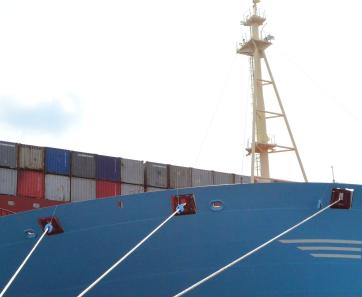
The planning and goals of freight transportation in Australia are mainly reflected in its "National Freight and Supply Chain Strategy". The following are the specific contents:
Planning
Infrastructure investment: Make wiser and more targeted infrastructure investments, including the construction, upgrading and maintenance of fret-related infrastructure such as ports, railways and highways, to enhance transportation capacity and efficiency. For instance, Australia is advancing an inland railway construction project that connects Melbourne and Brisbane, with a total length of over 1,700 kilometers. It will support the operation of double-decker container trains that are 1,800 meters long and is scheduled to be completed in 2024-2025.
Supply chain efficiency improvement: Take measures to optimize the supply chain, reduce delays and costs during the transportation of goods through better technological application, information sharing and process improvement, and enhance the overall efficiency and reliability of the supply chain. For instance, real-time tracking and monitoring of goods can be achieved by leveraging technologies such as big data and the Internet of Things, as well as optimizing transportation routes and inventory management.
Planning coordination and supervision: Enhance the coordination of freight planning to ensure effective connection and collaborative operation among different regions and transportation modes. At the same time, establish a freight supervision system that ADAPTS to future development, and conduct comprehensive supervision from aspects such as productivity, safety, security and sustainability. For instance, government departments should enhance communication and cooperation among themselves, and uniformly plan freight corridors and transportation hubs to avoid redundant construction and waste of resources.
Data and Information Management: Establish a national freight data center to collect, organize and analyze freight-related data, provide support for decision-making, and make freight planning and operation more scientific and precise. Through data sharing, promote collaboration among all participants and enhance the overall performance of the freight system.
Objective:
Enhance efficiency and international competitiveness: By optimizing the transportation network, improving logistics technology and management levels, etc., reduce freight costs, increase transportation speed and service quality, enhance the competitiveness of Australian freight in the international market, and better integrate into the global supply chain.
Safe, reliable and sustainable operation: Strengthen freight safety management to ensure the safety of goods during the transportation process; Improve the reliability of the freight system and reduce the risks of delays and disruptions; At the same time, promote the sustainable development of the freight industry and reduce its environmental impact, for instance, by promoting electric vehicles and optimizing transportation routes to cut carbon emissions.
Build an appropriate regulatory environment: Formulate and improve relevant laws, regulations and policies to provide a clear and stable regulatory framework for the freight industry, promote fair competition, safeguard the rights and interests of all parties, and at the same time encourage innovation and sustainable development.
Innovative solutions to meet freight demands: Encourage enterprises and research institutions to carry out technological and business model innovations, such as applying artificial intelligence and driverless technology, to enhance freight efficiency and service quality, and meet the constantly growing and changing freight demands.
Cultivate professional and adaptable labor force: Focus on cultivating various types of professional talents needed by the freight industry, including those in logistics management, transportation technology, supply chain planning, etc., to enhance the quality and skill level of practitioners and meet the demands of industry development.
Enhance understanding and recognition of freight operations: Strengthen communication and exchanges with the public, government departments and other stakeholders, raise the awareness and understanding of the importance of the freight industry among all parties, strive for support for freight projects and operations, and create a favorable development environment.

